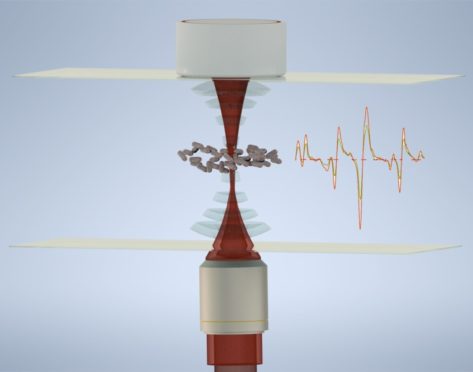A UK-wide team led by researchers at St Andrews University has developed new ways of using lasers and sound which could help the global fight against Tuberculosis (TB).
Staff at St Andrews’ Schools of Physics and Astronomy and Medicine say they have developed a way to monitor the reaction of living bacteria to antibiotics which could shorten the treatment for TB, the world’s leading infectious disease which causes about a million deaths every year.
The results of a study, in collaboration with the University of Southampton, have been published this week and highlight how researchers created a new device to harness the power of both light and sound.
They used sound waves to levitate and immobilise living bacteria in a small chamber.
Then, by scattering light from the bacteria, they recorded a Raman signal: essentially an optical fingerprint that reveals the molecular composition of the bacteria.
This combination of sound and light allowed the team, for the first time, to measure real time changes of the bacteria to existing antibiotics used for TB.
Dr Mingzhou Chen, a senior research fellow from the Optical Manipulation Group at the School of Physics and Astronomy, said: “This is a first study to tackle the problem of studying infectious disease with lasers and sound.
“We hope researchers will be able to use this innovative way to look at living bacteria and beyond.”
Professor Stephen Gillespie, leader of the infection group at the University of St Andrews School of Medicine, said: “This new tool will help us to understand why TB treatment takes so long and could be a platform for testing new drugs.”










